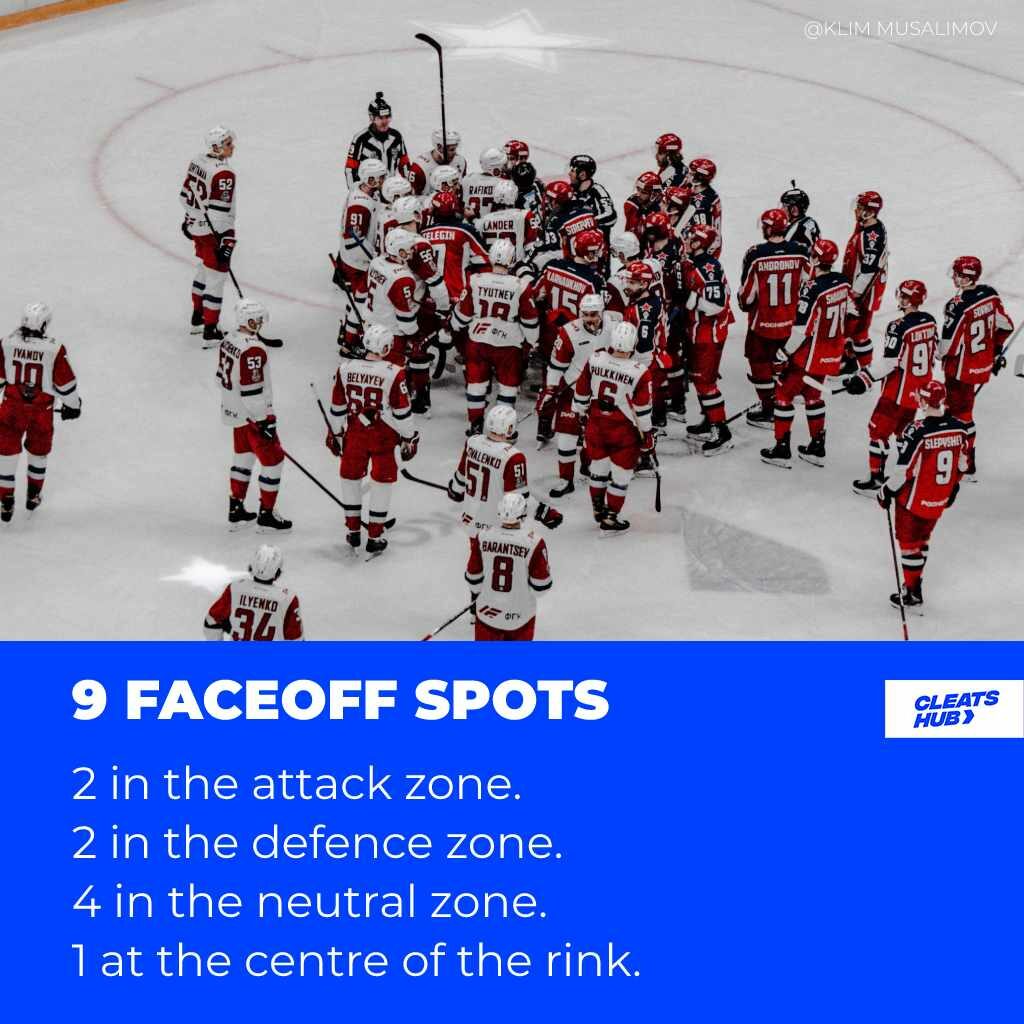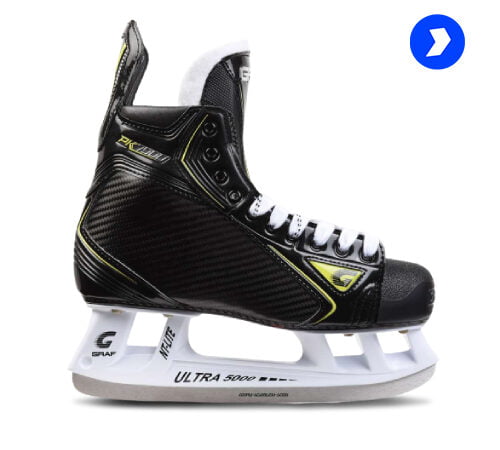How To Play The Center Position In Ice Hockey: The Centerman
The position of Centre (spelt Center in American English) in Ice Hockey, is a fundamental role that operates as the support network of the team. Why?
This is because they shift between offence and defence throughout the entire game, playing a crucial role in helping out team members attacking & defending.
A center is free to move around the rink, unlike the winger and defence who are usually fixed to their zones. Regardless, skating aimlessly around the pitch does not mean you will gain possession of the puck. Therefore you need to know how to organize your play, what to do and how to work with your team.
How To Be A Play as a Centerman in Ice Hockey
Skills That Make a Good Center
Oftentimes, only the best players on a team occupy the position of Center because it requires certain exceptional attributes that are necessary for maintaining the pace of the game.
The skills that can boost the efficacy of the Center to give the team a chance of headlining a game include:

– Remarkable Endurance
As a centre, you will move around the pitch the most, skating through the attack zone, neutral zone, and defence as many times as possible. Therefore, you will require a great amount of endurance to keep moving and playmaking.
– Stamina
Stamina is vital since ice hockey is a physical sport, therefore holding a major position like Center. Besides, it requires you to be able to “pack a punch”, get physical, have great balance while skating, and dig for the puck.
– Exceptional “Ice Vision”
A keen and calculative vision is key for a Center as you must be able to identify open spaces and potential openings to score. Furthermore, organising a breakout and pass the puck to open wingers needs good vision.
– Out-of-the-box Creativity in Playmaking
A Centerman needs to be a good tactician able to think outside the box. You must have the foresight to see and create opportunities for the wingers to put the puck into the net.
– Potent Stick Skills
In a hockey game, whenever there is a face-off, it is taken by the Centerman. Hence, you need to develop the mastery of stick skills to dig for the puck, maintain a firm grip over the puck, and outplay the opponent.
– Excellent Passing Skill
Having a potent stick skill is nothing if you are unable to make excellent passes to your teammates. Moreover, you must be able to create good passes in tight corners when you see a soft opening for your team.
– Strong and Fast Skating Ability
Swift and soft movement on the hockey pitch is critical, primarily with the Center position. In addition, a good centre will be an excellent skater fast enough to move with the ball and swift enough to intercept competition passes.
Mastering the Center position
How does a center Work With Defenders?
Since the role of a Centerman also involves being a supporting character in defence, you need to know how your role with the D-men (defencemen) affects the match.
- Your primary defensive objective is to stop your opponent from scoring the puck. When the puck is in your defence zone, your job as a centre is to work with the D-men (defencemen) to get the puck.
- Hang around the defensemen until you see an opportunity for you to help a D-man (defencemen) or launch a breakout.
- You skate to the back and intercept your opponent’s passes by reading the gameplay. Especially when your opponent has the puck, you will need to be swift in skating and predicting their play so that you can be able to regain possession and move the puck.
A smart trick is to focus on where the winger is looking, as he might want to gesture to his teammates before conceding a pass.
- Marking open wingers when the opposing team has the puck in your defence zone, hence, stopping a cross-ice or backdoor passes. Most times, a 3-on-2 game happens with 2 opponent winger and their centerman against 2 D-men (defencemen).
One of the defences is usually stationed in front of the goalie to keep others from getting too close, while the order tried to intercept the opposing wingers making it a 3-on-1 game.
In scenarios like this, you will need to join the D-man(defencemen) in marking one of the open opponents making it a balance 3-on-2 game, reducing their chances of scoring and increasing chances of intercepting passes.
Being a good centre requires you to know how you will work with the wingers and defenders on your team. You will also familiarize yourself with how you can efficiently work between offence and defence on the pitch.

How does a center Work With wingers?
There are 2 wingers to work with in ice hockey. Each of the players is positioned close to the sidelines between the hash marks and the blue line on defence on your side of the ice.
- Create an opening for wingers
When you are with the puck and seem to be cornered, you must have good “ice vision” to identify the openings. Once identified, you can then perform successful passes to an open winger.
When a winger is also cornered, get open in front of the net or call for a pass. Giving the winger options of what to do with the puck will, allow for better chances of scoring.
- Help out cornered wingers
Oftentimes in hockey, a winger can get a double teamed. In this situation, he is unable to move ahead with the puck and might try using his stick skills to manoeuvre an opening. In times like this, you can go ahead and help him dig for the puck.
- Creating Breakout play.
When you are making a breakout, and an open winger is visible, you can initiate a dump and chase. This means sending the puck long and letting the winger chase after it.

How To Work Between Offense and Defense
Now that you know how your roles as a centre, you will need to constantly switch from offence to defence. Even though you will play on both sides, you are needed more in offence and can move to defence when you see it necessary.
This is why stamina and endurance are needed because, you will be skating throughout the pitch all through the game.
Occasionally, the puck will be taken possession of in your offence zone or the neutral zone. At times like this, you will switch to defence and try to regain possession before it gets to defence.
How To Play Faceoffs
A faceoff in hockey is when a match is restarted. The referee drops the puck between two opposing players (which go head-to-head) to restart play.
One of the major responsibilities of the centre is playing face-offs. There are 9 faceoff spots in hockey.
- 2 in the attack zone.
- 2 in the defence zone.
- 4 in the neutral zone.
- 1 at the centre of the rink.

The centre is majorly responsible for taking face-offs on any of the 9 spots at any time. However, the faceoff strategy is determined by where you are playing it from. Before face-offs, centres are given a few seconds to discuss face-off strategy with teammates.
- If the faceoff slot is taken from the offence zone, you have more flexibility on what to do with the puck. You could cross it to a defenseman at the back, make a pass to a winger or give a surprise shot to the goalie with a chance of scoring.
- Likewise, if it is in the defence zone, options of what to do with the puck become limited unlike in the offence zone. Simply because, you will be looking for a breakout play. Most times, it is advised not to move the puck forward as it could be intercepted before it reaches the wingers. Rather make a pass to the open defensemen who you can then work with in unleashing a breakout play.
- You don’t need to play the puck during face-offs. Similarly, you can inhibit the opponent from moving his stick while a teammate comes by and sweep the puck off.
Tips To Enhance Your Play As A Center in ice hockey
Here are some tips for you to enhance your play as a Centerman and possibly give you the extra advantage, you need in making the play in your favour.
- Always be moving on the rink. You need to be swift always on the move, ready to intercept passes, give passes, take a shot into the opponent’s net, and assist in offence and defence.
- Learn to communicate well with your teammate. Gestures as simple as a nod of the head can give your teammate half a second to prepare for the puck coming his way. Gestures should be an integral part of team communication.
- Always study the gameplay of your opponent, it could give you half a second advantage to anticipate their next move.
Who are the best centers in Ice hockey?
The National Hockey League (NHL) is home to a number of reputable players and centermen who are dedicated to their role as the center.
If you want to learn some tactics and tricks about ice hockey, it is advisable to learn from the performance of renowned players. Here are a few of the best centres in Ice hockey, which you can gain knowledge from their play.
| Player | Goals | Assists | Total Points | No of Seasons |
| Conner McDavid | 162 | 307 | 469 | 5 |
| Leon Draisaitl | 93 | 122 | 215 | 2 |
| Nathan MacKinnon | 115 | 174 | 289 | 3 |
Conner Mcdavid (Edmonton Oilers)
McDavid has been ranked as the best centre by the NHL for the past 4 years. He is great in offence and has 469 points to his name over the last 5 seasons (162 goals and 307 assists).
Nathan MacKinnon (Colorado Avalanche)
Falling behind McDavid is MacKinnon who has great physical endurance, speed, stamina and vision. Over the past 3 seasons, he has gained 289 points (115 goals and 174).
Leon Draisaitl (Edmonton Oilers)
Also ranking 3rd on the NHL top 20 centers, Leon Draisaitl is a force to be reckoned with. In the last 2 seasons, he has recorded 215 points.
Conclusion
To play ice hockey like a pro, you will need training and commitment. Aside from knowing what to do on the pitch, training gives you the skills to perform your role well.
From the guide above, you should be more active and knowledge on what to do on the rink when playing ice hockey. Also, watching live matches will help you learn new tactics to implement in your play.
Note tired of getting to know about Ice Hockey? You might want to find out more on the NHL hockey player who recorded the highest number of goals in a single match.
Psstt…. The Top Performing Cleats










